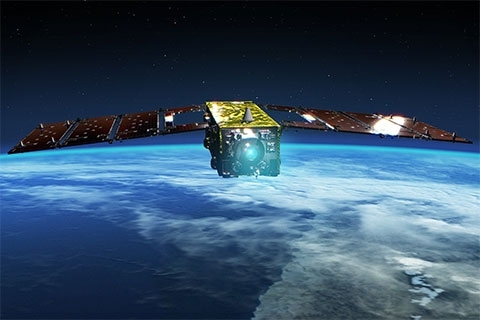Japan launched a rocket that sent two satellites into space, but what are they meant to do?
The two satellites are nicknamed Shikisai and Tsubame.



Japan's space agency JAXA launched two satellites into space on 22 December. The satellites were flown to space by a JAXA H-2A rocket, which launched from the Tanegashima Space Center. The two satellites which are nicknamed Shikisai (which means colour in Japanese) and Tsubame (which translates to swallow), are on separate missions.
Shikisai, also known as the Global Change Observation Mission-Climate (GCOM-C) satellite, will be monitoring Earth's climate from space for the next 15 years.
"GCOM is expected to play an important role in monitoring both global water circulation and climate change, and examining the health of Earth from space," JAXA said in a statement.
The Shikisai satellite is also carrying an instrument called the Second Generation Global Imager (SGLI) that will conduct atmospheric and surface measurements. The instrument will also study Earth's carbon cycle, clouds, aerosols, ocean colour, vegetation, and snow and ice.
Meanwhile, Tsubame, or the Super Low Altitude Test Satellite (SLATS), will test how ion engines could likely keep satellites floating in the air in "super low orbits," below 300 km.
"This orbit is an undeveloped region and it has yet to be fully utilized by satellites. Satellites in a super low orbit will bring benefits such as high-resolution observations for optical imagers, low power transmissions for active sensors, and cost reductions for satellite manufacturing and launches," JAXA said in a mission overview.
Since SLATS will be in such a low orbit, the satellite will be forced to withstand around 1,000 times more atmospheric drag than what higher-orbit spacecraft, such as the International Space Station, are subjected to.
"In order to solve the atmospheric drag issue, JAXA has adopted an ion engine. The ion engine uses fuel 10 times more efficiently than gas jets. Furthermore, we are developing a compact satellite to minimize air resistance, and will verify that our technology can support orbiting at super low altitudes over an extended period of time."






















